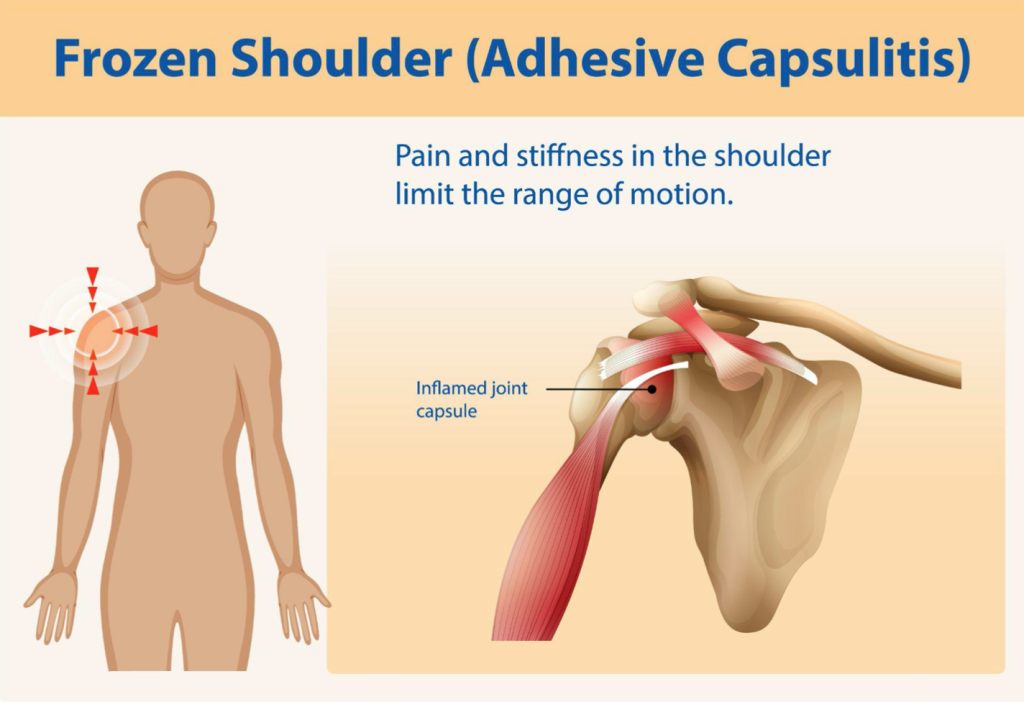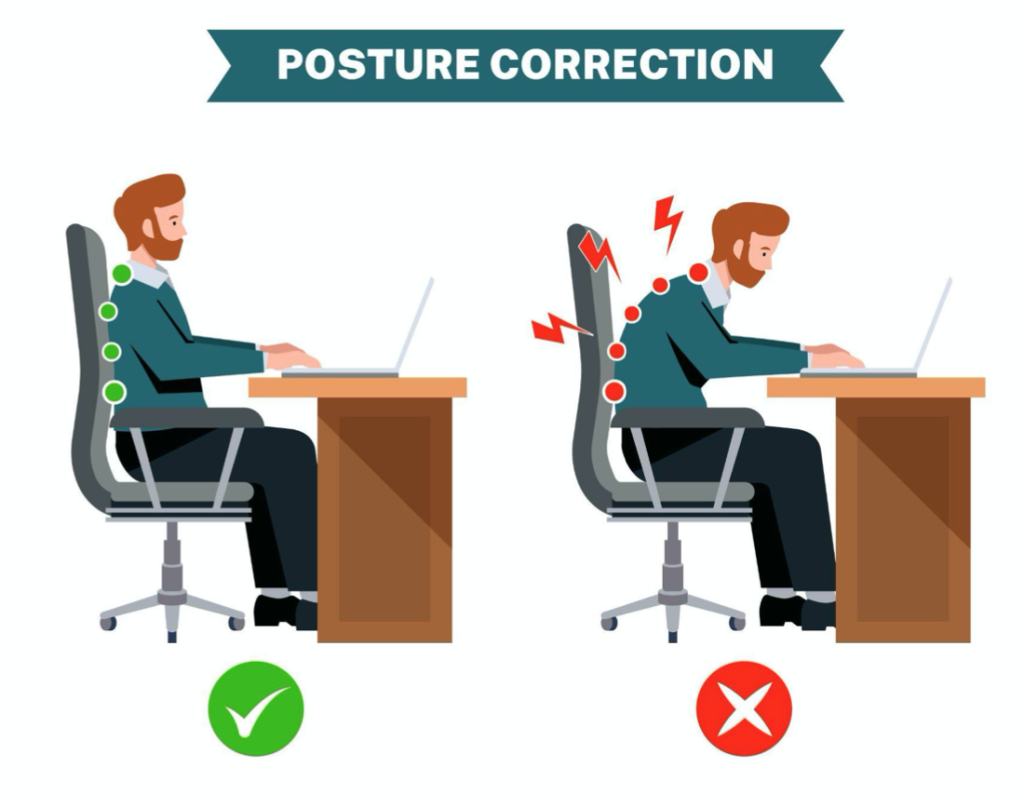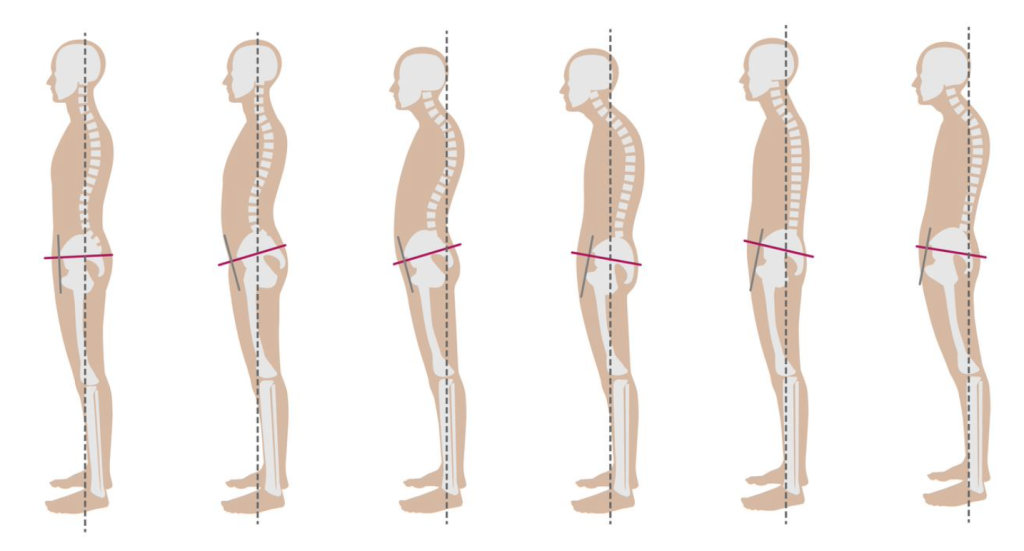
You’re driving home from work when you notice a dull, aching pain in your shoulder. You’re not sure what could’ve caused this and assume it’ll go away on its own. Later that night as you lift your arm up to reach the top shelf of the pantry, you experience more pain.
Weeks turn into months, and the pain gradually worsens. You visit your physician and receive a diagnosis: frozen shoulder.
Now what?
There are many traditional treatment methods for a frozen shoulder, including physical therapy, medications, traditional chiropractic care, and in rare cases, surgery. However, research shows that chiropractic care focused on posture correction, called Chiropractic BioPhysics can provide significant benefits.
In this article, you’ll learn what a frozen shoulder is, and how posture plays a role. You’ll also learn how Chiropractic BioPhysics® (CBP®) may help speed up recovery.
What Is Frozen Shoulder?

Frozen shoulder, or Adhesive Capsulitis, is a condition that causes significant pain, discomfort, and decreased mobility of the shoulder. The condition is believed to be caused by inflammation and scar tissue in and around the connective tissue fibers that make up the capsule of the shoulder joint. The adhesive scar tissue causes the lock in motion, which causes the shoulder to lock in motion.
The three phases of Frozen Shoulder
Frozen Shoulder occurs in 3 different phases over time:
- Phase 1: freezing stage: the pain gradually worsens (takes 2-9 months).
- Phase 2: frozen stage: pain decreases or disappears; the shoulder becomes stiff, and there is a decreased range of motion (lasts 4-12 months). This is caused by increased scar tissue in the shoulder joint.
- Phase 3: thawing stage: the range of motion of the shoulder improves (lasts 6 months-2 years).
Sometimes frozen shoulder occurs out of the blue. Other times, the freezing that occurs can be the result of inactivity of the shoulder for a long period of time, such as during injury or illness. This can lead to tightening, thickening and lack of elasticity in the shoulder joint capsule. It can make lifting or moving the arm difficult and disrupt sleep. This is primarily caused by the formation of scar tissue in the shoulder capsule of the joint. Scar tissue decreases range of motion, increases tenderness in the joint and decreases vascularity. This imposes on the healing capacity of the joint.
Risk factors
Frozen shoulder is most common between ages 40-60 and is more common in women than men.
There are several pre-existing conditions that can increase the risk for developing the condition. These are: Injury, surgery, diabetes, thyroid related issues, cardiovascular disease, and parkinson’s disease. Frozen shoulder affects 5% of the general population and 20% of diabetic patients.
What happens if left untreated
Left untreated, the frozen stage can last up to a year, and the thawing stage, where the shoulder regains mobility, can take two years or longer. Sometimes the symptoms never resolve on their own.
Obtaining a diagnosis and starting treatment as early as possible is the best way to increase the likelihood of a better outcome. In regards to the scar tissue in the shoulder joint, the only way the scar tissue is released is by a specific force (specific spinal adjustment) into the joint to microtear the scar tissue adhesions and lack of range of motion.
Treatment Methods
Treatment can vary depending on which phase you are in.
Common treatment methods are physical therapy, anti-inflammatory medicine, and surgery.
While physical therapy and medications can help manage frozen shoulder symptoms, addressing underlying postural issues is the main reason of the shoulder dysfunction. This is where Chiropractic BioPhysics (CBP®) can play a role.
How Posture Affects the Shoulder
Posture plays a significant role in mechanics and ranges of motion. Much of what we do is habitual-we do it without even thinking about it- and poor posture is no exception. When poor posture becomes a habit, it puts extra strain on the body over time.

Here are a few types of bad posture:
- Forward head posture (FHP) or anterior head translation) is when the head is positioned forward rather than aligned with the spine. This puts strain on the neck and shoulder muscles. Research shows that forward head posture also has an effect on the way the brain and nervous system respond.
- Rounded shoulders often occur from slouching and can be straining on the upper back, neck, and shoulders.
- Poor sitting posture can worsen neck and shoulder pain. Examples: being slumped over in a chair or leaning too far forward.
Thoracic cage shift, or the shifting of the ribcage can cause forward head posture and rounded shoulders which load the mid back and low back. Because posture is the reason for poor shoulder mechanics, it’s important to look for treatments that go beyond pain relief and look for treatments that go beyond thoracic posture patterns which repeat over a lifetime.
Because posture plays such a big role in shoulder mechanics, it’s important to look at treatments that go beyond pain relief and focus on long-term correction. This is where Chiropractic BioPhysics (CBP®) comes in.
What is Chiropractic BioPhysics
Chiropractic BioPhysics Technique or CBP® is a treatment method is the structural rehabilitation of the spine and posture.
Ideal posture alignment is where the center of mass of the skull, thorax and pelvis are in a vertical line. The spine has natural curves that help support and dissipate structural stress. When these curves are out of alignment, it can strain the shoulders and upper back, contributing to stiffness and pain.

Posture Correction, and Frozen Shoulder
Chiropractic BioPhysics CBP® provides targeted chiropractic care that can help restore shoulder mobility and reduce pain associated with frozen shoulder.
This treatment targets forward head translation and thoracic cage alignment both of which affect shoulder mechanics.
Research supports these clinical observations, showing measurable improvements in posture and shoulder function after CBP® care.
CBP® Research
A review of case reports demonstrates how CBP® methods have significantly improved postural alignment. These alignments are associated with clinically significant improvements in the patient’s overall pain and disability scores (Harrison et al 2018).
A specific case report (Haas et al 2023) demonstrates the effectiveness of using CBP® to heal severe shoulder pain..
The study looked at a man who had severe shoulder and neck pain after receiving a covid shot. He also had poor posture: forward head, rounded upper back. He was treated with Chiropractic BioPhysics (CBP ®) care along with a shoulder rehab program. After 4 months his pain was gone, his shoulder function improved, and his posture had significantly improved.
How CBP® Helps Patients with Frozen Shoulder
Chiropractic BioPhysics (CBP®) offers a unique approach to frozen shoulder by addressing both the shoulder itself and the posture patterns that may be contributing to the problem. Unlike treatments that focus only on relieving pain, CBP® works to restore healthy spinal and shoulder alignment. Healthy spinal and shoulder alignments consist of ranges of motion and spinal mechanics.
By correcting forward head posture, rounded shoulders, and misalignment in the spine, CBP® helps reduce the extra strain placed on the shoulder joint. As posture improves, patients often notice less stiffness, fewer flare-ups, and more freedom of movement. CBP® works to create lasting changes in alignment, which can lead to long-term relief and better overall quality of life.
Conclusion
Frozen shoulder does not have to control your life. By focusing on posture and structural alignment, The Posture Doc helps patients restore movement and reduce pain. Taking steps to improve posture today can lead to faster recovery and long-term shoulder health.
